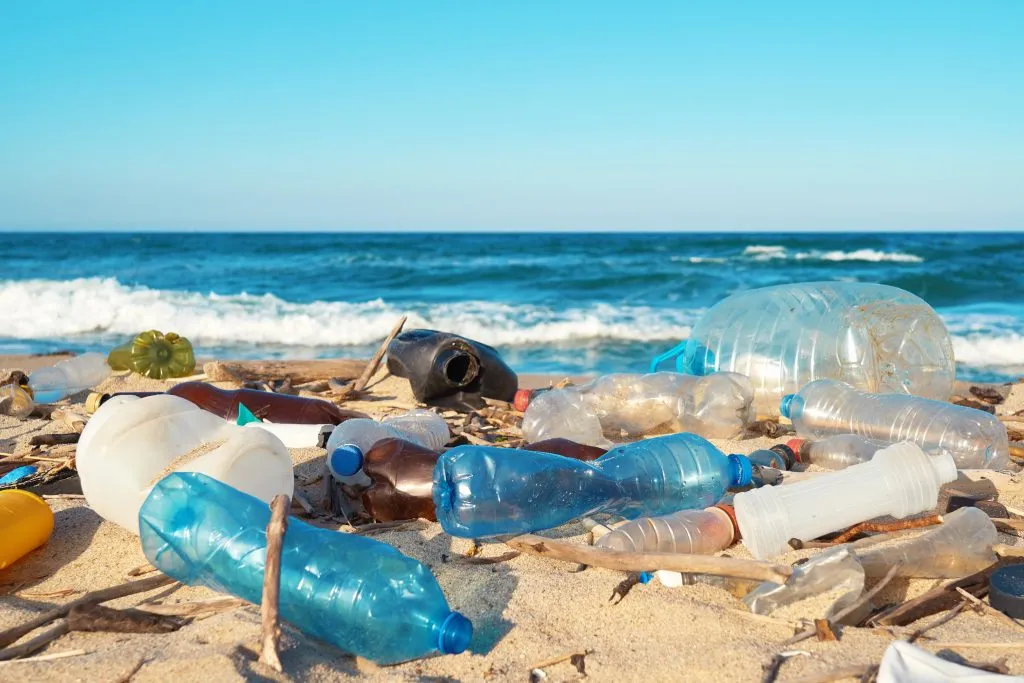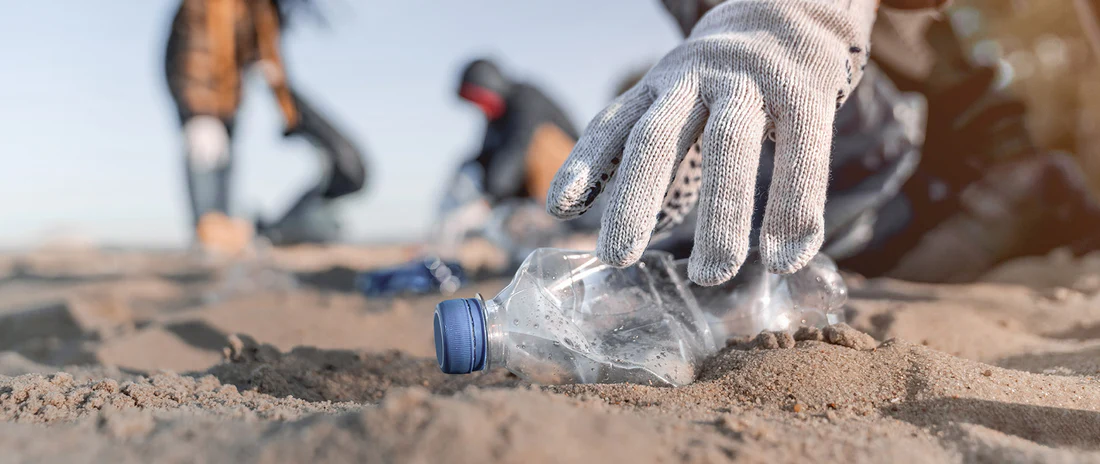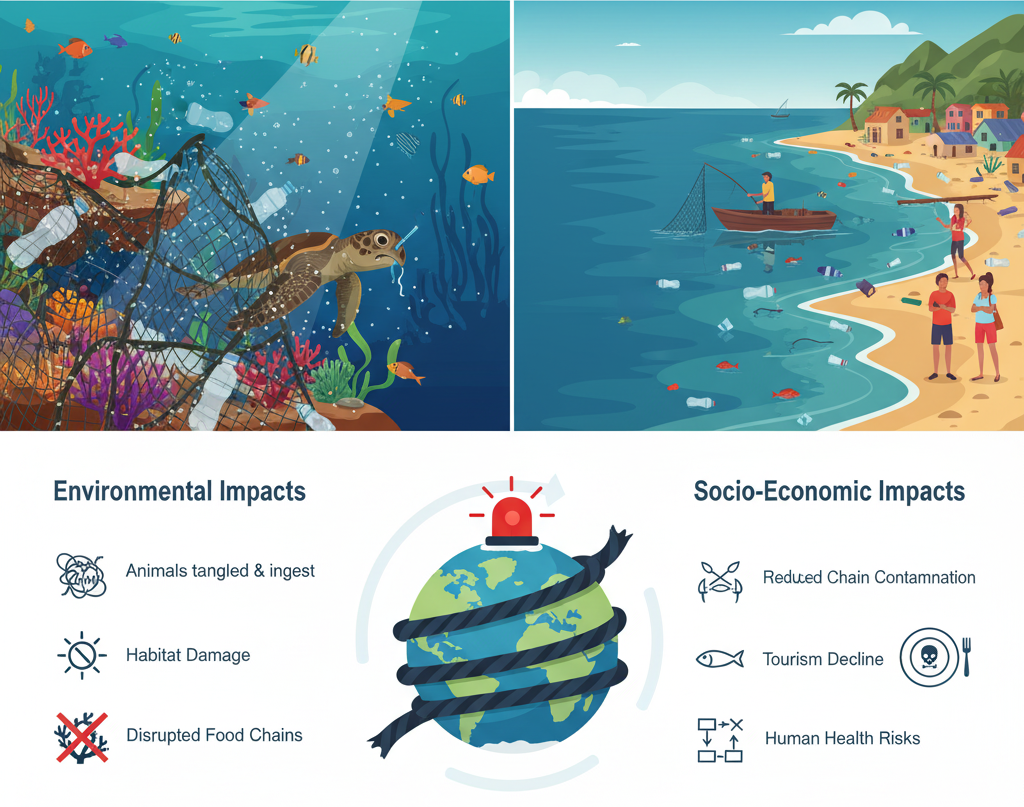Ocean Bound Plastic (OBP): A Practical Guide for Packaging
Most packaging teams now face pressure to address sustainability. Regulations are tightening, and consumers notice what happens to packaging after use. The data shows millions of metric tons of plastic enter oceans yearly. This isn't just an environmental issue—it affects business reputations and compliance. At MTPak, we make flexible packaging for global brands in food, beverage, pet food, and personal care. We help companies meet these challenges by developing packaging that incorporates recycled materials, including certified ocean-bound plastic. It's a straightforward approach to reducing environmental impact.
This article explains what OBP means, its real-world effects, and how to handle it in your packaging operations.
Ocean Bound Plastic (OBP)
What is Ocean-Bound Plastic (OBP)?
Ocean-bound plastic is discarded plastic waste that's likely to reach the ocean. Think of it as mismanaged material found within 50 kilometers of coastlines or near rivers that flow to the sea. It's not just litter on beaches. A coffee pod tossed in an inland city can wash into a storm drain, travel through rivers, and eventually reach the ocean. Studies suggest OBP could account for about 80% of marine plastic litter. Recognizing its sources helps us intercept it.
What Are the Common Types and Grades of Ocean-Bound Plastic?
OBP comes in different forms. Where we find it determines how we classify it.
Common types found in the field
• Potential OBP: Plastic collected within 50 km of shorelines
• Waterway OBP: Waste found 200 m from rivers that flow to sea
• Shoreline OBP: Debris within 200 m of coast, at risk of tidal wash-out
• Fishing gear: Lost commercial nets, ropes, and traps
Plastic size categories
We also sort plastic by size. This affects cleanup methods and environmental impact.
| Category | Size Range | Typical Impact |
|---|---|---|
| Macroplastics | > 20 mm | Bottles, bags. Cause entanglement. |
| Mesoplastics | 2-20 mm | Fragments from broken larger items. |
| Microplastics | < 2 mm | Often from degraded items or microfibers. |
Ocean Bound Plastic (OBP)
How Does Plastic Waste Actually Reach the Ocean?
Plastic can get into the water in a few different ways. When there isn't much waste management in an area, the wind blows plastic from landfills into rivers and streams. When it rains, trash from cities gets washed into drainage systems that go to the ocean. Even tiny fibers from washing can get through water treatment. A bag of pet food that isn't thrown away correctly could start this trip. Knowing these paths helps us understand why it's important to handle waste better.
Why Should Your Business Care About OBP?
The ocean is home to systems that we all rely on. It helps keep the climate stable and gives us food. Ecosystems suffer, and prices go up when plastic pollutes them. From a corporate point of view, more and more customers are choosing companies that show they care about the environment. Using OBP in your packaging isn't just ethical — it responds to market demand. It also gets your business ready for new rules about how to use plastic.
What Damage Does OBP Cause in Practice?
The effects were felt in both the environment and the economy.
Environmental Impacts
OBP hurts marine habitats directly. Animals get hurt or die when they get caught in nets or eat plastic. Coral reefs and bottom habitats are hurt by bigger pieces of trash. When plastic breaks down, it absorbs sunshine and lowers oxygen levels, which messes with whole food systems. You've seen the photos of turtles with straws in their noses—that's the visible part of a bigger problem.
Socio-Economic Impacts
On the human side, plastic pollution hits economies and health. Fisheries see reduced catches, tourism suffers from dirty beaches, and municipalities pay for cleanups. Microplastics and their absorbed chemicals can enter seafood. When people eat that seafood, those contaminants may pose health risks over time. It becomes a supply chain problem that reaches our dinner plates.
Socio-Economic Impacts
How Can MTPak Tackle OBP in Daily Packaging Work?
We take a direct approach to OBP. Here's how it works in production.
Use less plastic and smarter designs
The simplest way to reduce OBP is to use less material upfront. We help brands lightweight their packaging or design mono-material structures that recycle easily. For a coffee bag, switching from multi-layer to a single-material structure can dramatically improve its end-of-life options.
Switch to better materials
Material choice changes everything. We regularly work with:
○ Compostable packaging: Breaks down in commercial facilities.
○ Recycled content: We integrate post-consumer resin, including certified OBP.
○ Bio-based materials: Options made from renewable resources.
Get your supplies from responsible sources
We only use paper from providers that are certified by the FSC or PEFC, and we keep track of where we get our recycled plastic. Setting up clear recycling locations and doing trash audits will help keep packaging from becoming OBP in your business. It's basic housekeeping, but it works.
Join OBP certification programs
Certifications like Zero Plastic Oceans' standard verify proper collection and processing. For a brand using OBP in shampoo bottles, this provides proof of claim. The certification tracks material from collection to final product.
Help consumers dispose of packaging correctly
Clear labeling matters. Adding recycling instructions or QR codes to packaging guides proper disposal. A pet food bag might say "Rinse and Recycle" to improve recycling rates. This turns your packaging into an education tool.
packaging correctly
Conclusion
Plastic that ends up in the ocean is a tough problem, but there are ways to fix it. It all comes down to using less stuff, making smarter choices, and getting rid of trash the right way.
At MTPak, we use these methods in our package creation. We assist brands in choosing the right materials for their products, such as a coffee bag that needs to keep moisture out or a pet food pouch that needs to last a long time. Our crew knows a lot about technical things like how strong a seal is, how well ink sticks are, and how to meet FDA and EU regulations. We come up with ways to use recycled materials in products without losing quality.
Contact MTPak to talk about your packaging choices.
Email:account@mtpak.com
Contact us:https://mtpak.com/contact-mtpak
FAQs
1. Is OBP safe for food contact?
Yes, as long as it is properly handled and certified. It must meet the same safety criteria.
2. Does OBP packaging biodegrade?
No. The material remains conventional plastic, but we're giving it another life instead of polluting oceans.
3. How do you verify OBP sources?
Through supplier certifications and chain-of-custody documentation. We audit our supply lines.
4. What other certifications matter?
For compostability, look for ASTM D6400. For paper, FSC or PEFC show sustainable sourcing.
5. How do I choose barrier materials for coffee?
Think about the kind of roast you have and how long it will last. To keep dark roasts fresh, they often need high-barrier materials like EVOH coatings. We try everything out to find the proper balance.




